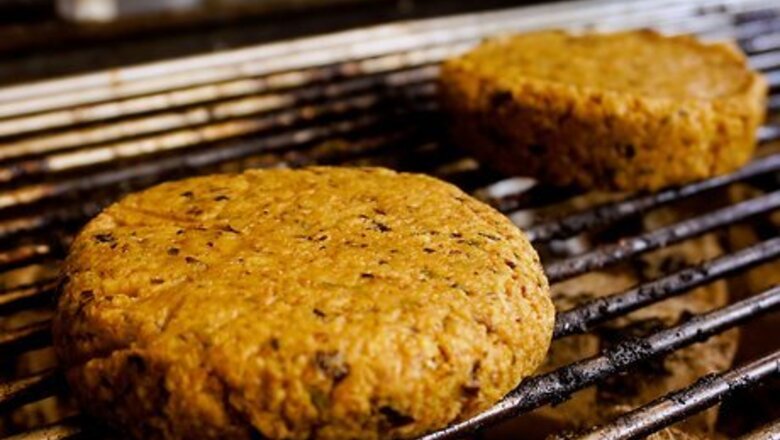
views
Grilling Beef
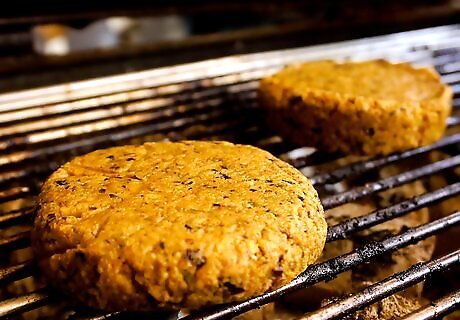
Make burgers. Cooking burgers on a grill or barbecue is a great way to give your burger a little extra flavor. Be sure to choose a ground beef with your desired fat content, add your desired ingredients and spices, and form your patties before placing them on a hot grill. Depending on how thick your patties are, grilling burgers can be relatively quick. Grilling burgers will also allow you to cook at a higher volume than you would on a stovetop or oven. Burgers can be cooked to any temperature, but they shouldn’t take more than 10 minutes per side no matter how done they are. The more fat in your ground beef, the more flavor. Try starting with 80/20 fat to lean meat ratio. You can even grind your own beef for burgers. Some butchers will even grind specific cuts for you.
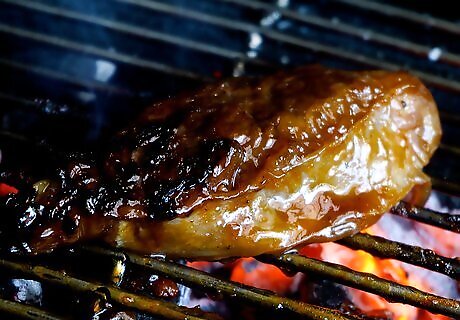
Grill steaks. Grilling steaks can be a great addition to a barbeque or cookout. Almost any cut of beef can be grilled on a barbeque and cooked to perfection. Choose whichever cut you prefer, from bone-in ribeyes to skirt steaks, season them with your desired spices and herbs, and place them on a hot grill. Cooking times on grill vary, especially between gas grills and charcoal grills. Use a meat thermometer in order to be certain of what temperature your steaks are. Steaks will be medium rare at 145F, medium at 160F, and well done at 170F.
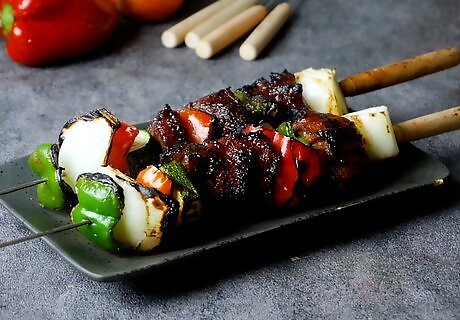
Try grilling Kebabs. Kebabs are great dishes to be served at parties. Kebabs generally consist of cubed meat and a series of vegetables all skewered and grilled. You can use wood or metal skewers when making kebabs, although metal skewers will retain heat and wooden skewers may burn. Choose a cut of meat or purchase beef that is already cubed. Cubed beef is often top sirloin cut into small pieces, but feel free to experiment and use any cut you like. Simply place the meat on the skewer, add vegetables if you wish, and season with your desired spices before placing them on a hot grill. Kebabs will cook relatively quickly due to their size. Be sure to keep an eye on them so they don’t overcook or burn. You’ll generally only need to cook kebab meat around 2 minutes per side on a hot grill.
Cooking Beef on a Stovetop
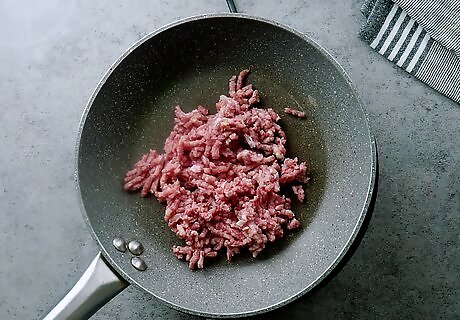
Cook ground beef. Ground beef is one of the most versatile cuts of beef. It can be used in a wide variety of styles and dishes. Knowing which dish you will be frying beef for will help determine the exact seasoning you will need. Place the beef and seasoning into the bowl and mix with your hands until the seasoning is fully incorporated. Place a skillet with oil over medium-high heat. Once the oil has heated place your ground beef in the skillet and stir it with a utensil, like a wooden spoon, spatula, or fork until brown. Break up any clumps of meat to ensure that all of the ground beef is cooked to the same temperature, will most likely be well-done. Use seasonings like thyme, fresh garlic, rosemary, salt, and pepper for more European style dishes, like lasagna, shepherd's pie, bolognese. Try adding spices like paprika, cayenne, chili powder, or fresh cilantro for latin style dishes, like tacos, Picadillo, or chillis.
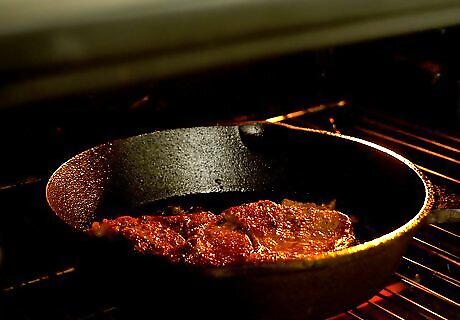
Cook steaks and finish them in the oven. Preheat your oven to 350F and let it cycle for about 45 minutes. Season your steaks with your desired spices and begin to heat oil in a pan over medium-high heat. Once the oil is hot place one side of the steak down in the pan and sear for 2-3 minutes. Searing locks in the flavor of the steak as well as creates a “caramelized” or heavily flavored crust. If your steak is large or thick you may need to finish it in the oven. Some thinner steaks, like flank steak or skirt steak, can be cooked quickly just by searing. Steak that come thicker or with edges that need to seared are T-bones, Porterhouses, New York strips, and Ribeyes. Let the steak rest on a cooling rack, cutting board, or plate for about 10 to fifteen minutes to let the steak finish cooking and reabsorb its juices.
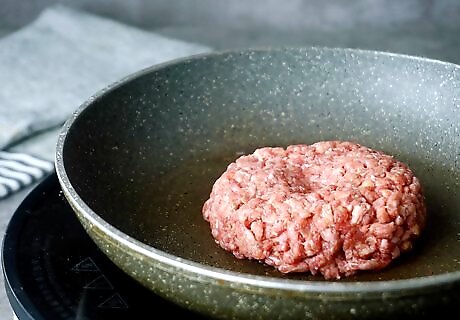
Try making burgers. Burgers can be made on a stovetop as easily as they can be grilled. Choose a ground beef with your desired fat content, season well with spices and herbs, and form your patties. Heat a skillet with oil over medium-high heat and place the patties in once the oil is hot. Your cooking time will vary depending on what your desired temperature is and how thick the patties are. A general rule is that patties that are 1 inch thick will take around 4-6 minutes a side to cook. Make a stir fry. Stir frys can be an excellent source of protein and vegetables, and they are relatively simple and easy to cook. Many butchers already have beef cut to stir fry size, which can be anywhere from small cubes to thin slices. You’ll need to heat a walled skillet or wok with oil over a medium-high heat, then add your beef to brown quickly, followed by your vegetables and an accompanying sauce. Add sauces like soy sauce and oyster sauce to give your stir fry even more flavor. Beef in stir fries cook very quickly. Don’t worry about over cooking the beef as they will likely be well done regardless.
Oven Roasting Beef
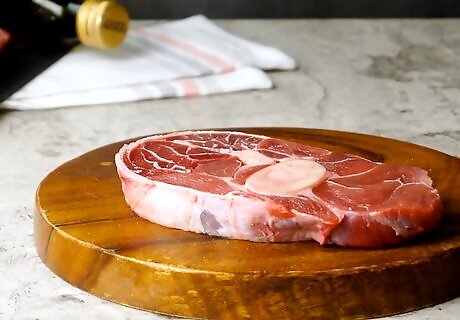
Purchase a large cut of beef. Roasting is a classic and simple way to cook and prepare beef. However, not all cuts of beef will be ideal for roasting. Speak to your butcher or grocery employee about which cuts they have that would be good for roasting. Rib roasts, rumps, and large chucks all make for great roasts. Roast beef also makes great leftovers and can be used in sandwiches, so don’t be afraid of purchasing too much.
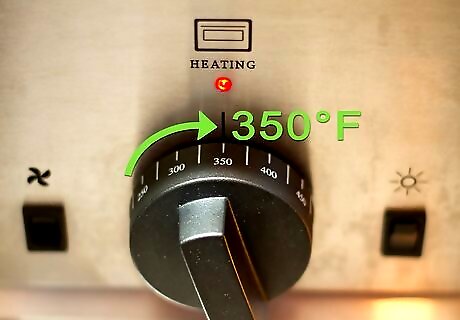
Preheat your oven to 350F. Most roasts will need to cook at a steady temperature for a long period of time. Turn your oven to 350F and let cycle a few times. Cycling your oven, which is when the oven comes to temperature and then cools, will help you maintain a consistent temperature. The longer you let your oven preheat the more consistent the temperature will be.
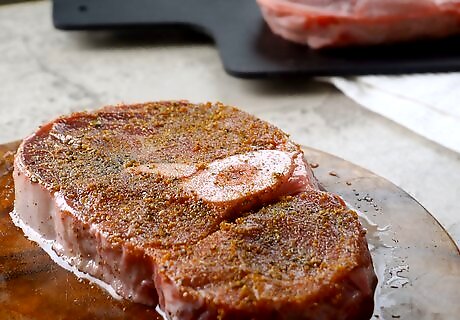
Season the beef and let come to room temperature. Take the beef and rub it with olive oil. Then sprinkle salt and pepper all over the cut of beef. You might even add fresh herbs to your seasoning, like fresh rosemary and thyme.
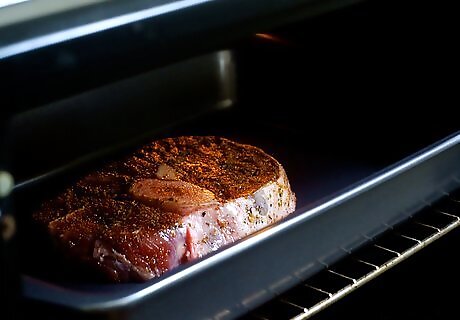
Place the beef in a walled roasting pan and place the pan in the oven. Walled roasting pans will be slightly easier to handle and will also distribute the heat conducted in the oven more evenly. Place your roast in the middle of the pan, with the fat side up if applicable.
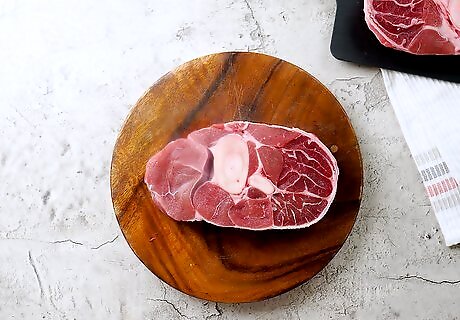
Calculate the roasting time by weight and temperatures. Beef, unlike poultry or pork, can be safely eaten in a range of cooking temperatures. Each temperature will depend on weight and whether or not the cut is “bone-on,” or has the bone attached. A general rule for cooking beef to a temperature of medium rare, the most common temperature, is 30 minutes per pound of meat. For example, a 5.5 pound rib roast would take approximately 2 hours and 45 minutes in an oven at 350F to be medium rare. Cooking temperatures for beef are as follows: Rare (130F), Medium Rare (145F), Medium (160F), and Well Done (170F). There are also many meat timers available online where you can calculate roasting times based on weight and cut of meat, like at BBC Good Food.
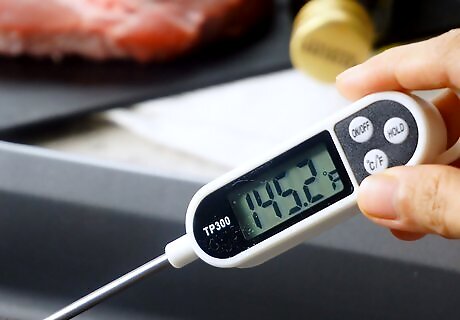
Check the temperature of the beef with a meat thermometer. Meat thermometers are useful tools to have when roasting beef as their probe allows you to take the internal temperature of the beef. Measure the internal temperature of the roast once you are getting closer to its calculated cook time. Simply take the probe of the thermometer and stick it in the center of the roast. Push the thermometer approximately half way into the roast and wait until you get a reading. Medium rare reads at 145F, medium at 160F, and well done at 170F. If your beef is undercooked, place it back into the oven and check the temperature every 10 to 15 minutes to avoid overcooking it.
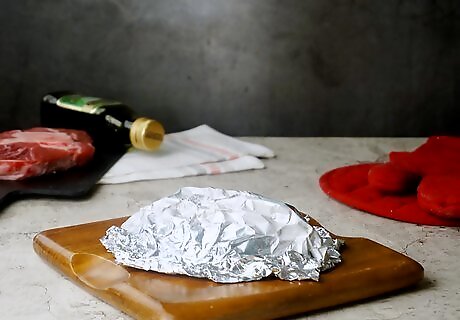
Remove the beef from the pan and let it rest for 20 minutes. Remove the beef and place it on a cooling rack, cutting board, or serving platter to let rest. Cover the roast in foil and wait 20 minutes before uncovering and serving. Letting the roast rest will allow the roast to finish cooking and reabsorb the juices it lost from the heat of the oven.
Slow Cooking Beef
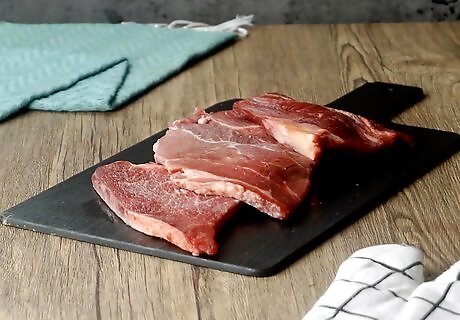
Choose a cut of meat. A general rule with slow cooking is to cook a cut that is too tough to be grilled or cooked on a stovetop. Most of these cuts tend to be cheaper and often come in larger portions. The more popular slow cooking cuts are brisket and chuck pot roasts. Braised and slow cooked meats also keep and reheat well, so don’t be worried about purchasing more than you can eat in one sitting. Ask your butcher for slow cooking beef recommendations. Some other popular cuts are beef shoulder, short ribs, and bottom round steaks.
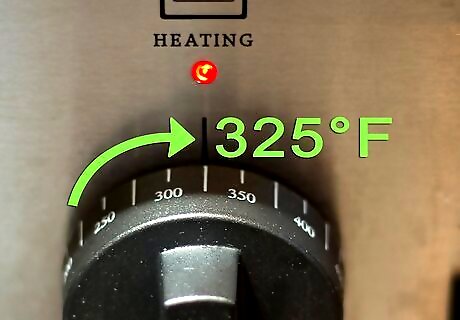
Preheat your oven. Preheat your oven to 325F and let it cycle for around 45 minutes. Cycling will give your oven a consistent temperature. You want a relatively low temperature so that the fat and sinew in the beef can breakdown and become tender.
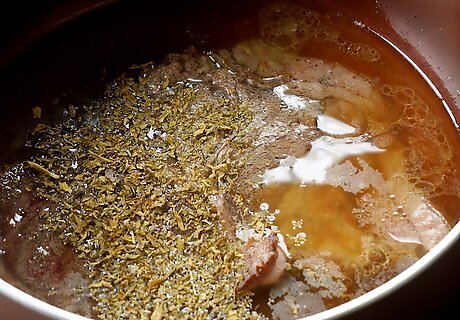
Season the meat. Slow cooking can also call for using other spices, herbs, and liquids than are normally used when grilling or searing. A classic combination when braising beef is to use salt and pepper, fresh rosemary, thyme, and sage, and a little red wine and beef stock. Place these ingredients in a high walled pot, preferably a dutch oven. If you don’t have a dutch oven or a high-walled pot with a lid, you can purchase cheap aluminum roasting pans from most supermarkets.
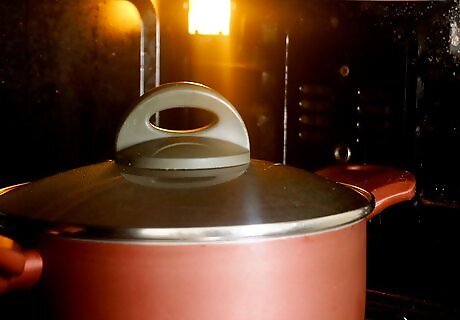
Cook until fork tender. The only draw back about braising and slow cooking is in its name, its slow. However, the one benefit to slow cooking is that you don’t have to worry about over cooking the meat. Instead, let the beef cook for around 3 hours, checking on it occasionally. Press the prongs of a fork into the meat and gently pull. If the meat is fork tender the beef should be able to fall apart with minimal effort. If the meat is still tough, leave it to cook for another hour or so.
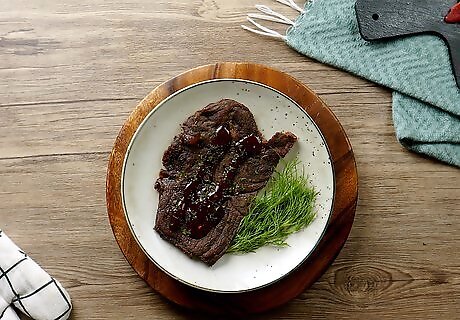
Finished.




















Comments
0 comment